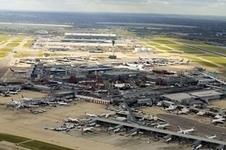Lytag chief executive Gareth Moores looks at how using common construction materials can make a building project greener without demanding big changes
Making a building project more sustainable does not have to mean making big changes to working practices, implementing new systems or getting to grips with newly-developed sustainable materials, it can be much simpler than that. The materials that are used on site everyday – such as concrete, aggregate and fill – can offer construction professionals a way of strengthening the sustainability credentials of a project without requiring changes to traditional approaches.
Government legislation aimed at a more sustainable future for the construction industry, such as the draft Strategy for Sustainable Construction (2007) and the Code for Sustainable Homes, is increasingly supported by clients’ own demands and incorporating recycled content in a project is one way to meet these requirements. But with anxiety over the global credit crunch, it is important that the materials chosen to make a build more sustainable also deliver on quality and performance. Building sustainably doesn’t mean using new and untried materials and construction methods, in fact there is a wide range of materials available which have been on the market for years and chosen for their performance and quality, long before the question of sustainability came to the fore. Proven by years of results, these products can be specified with full confidence, helping to meet sustainability requirements without the need to research performance, run trials or use an unproven product.
Using Secondary Aggregate
One opportunity for construction professionals to incorporate significant amounts of recycled content in a project without making big changes or compromising on quality is by choosing secondary aggregate. Manufactured from the by-products of other industrial processes, secondary aggregate can be made from a variety of materials including colliery spoil, china clay waste, slate waste, power station ashes, blast furnace and steel slags, incinerator ashes and foundry sands. Using such secondary materials in the place of traditional aggregate not only reduces the demand of natural aggregate, but also diverts thousands of tonnes of waste from landfill each year.Pulverised Fuel Ash
Pulverised Fuel Ash (PFA) is the by-product of coal fired power stations and is commonly used, either directly as ash or sintered to produce a hard but lightweight aggregate. One such sintered product is LYTAG, which has been used for over forty years by the construction industry and offers users some important performance benefits. Used in a variety of construction applications such as concrete, screeds, fills and drainage the lightweight quality of the product delivers design flexibility, logistical advantages and easier handling of the material, as well as potential labour and cost savings. LYTAG is a prime example of a high quality, everyday material that can also make a build more sustainable whilst used in the same way as natural aggregate.Heathrow’s Terminal 5
Although Terminal 5’s grand opening was beleaguered with problems, the success the design and construction achieved in terms of sustainability should not be forgotten. From the reduction and recycling of waste, to the use of recycled and secondary materials, Terminal 5 had sustainability at its very core.BAA contractors, Vetter UK, a subsidiary of Laing O’Rourke, specified floor screed made using LYTAG as opposed to one made using traditional aggregate to minimise the weight on the upper floor of the terminal, which was a key consideration when working over such a large area. Two different types of LYTAG screed were specified: Structural lightweight concrete screed for the back of house handling areas and no fines for the passenger facilities. In the handling areas the structural screed was the final finish for the floor and therefore it needed to have the structural integrity to be able to ensure that regular vehicle traffic could be accommodated without damage to the surface. LYTAG lightweight concrete offered the same strength as traditional concrete, but was around 25 per cent lighter, so it could be easily incorporated within the structure minimising the additional loading to the building.
Peter McColm, T5 Project Manager at Vetter (UK), says: “For us, the contractor, it was more important for us to procure a product that we were confident would deliver a high quality finish. This product achieved this, the fact it is sustainable is an added bonus. Sustainable construction is becoming increasingly important to our clients and to have a product that achieves on both levels is excellent.”
The drive towards sustainability is not just limited to the construction industry; every industry is under pressure to improve its credentials from car manufacturers to airlines. For the construction sector, improvement can be achieved relatively easily. Building green doesn’t need to be limiting or complex and projects such as the new Assembly building in Cardiff Bay, the London Metropolitan University Science Centre and the refurbishment of St Bart’s Hospital have already demonstrated this, and are recognised for their commitment to sustainability. Looking at the traditional construction materials and choosing those which have a higher level of recycled content is an easy but significant way to make a difference to a project’s overall sustainability.




























No comments yet